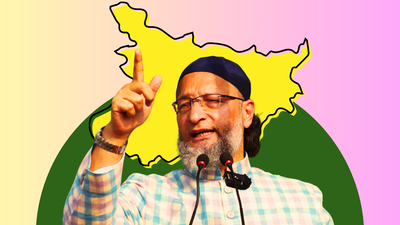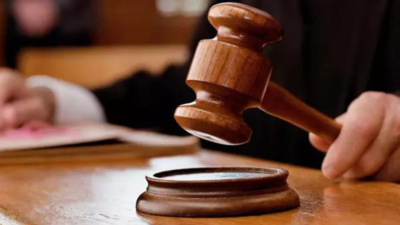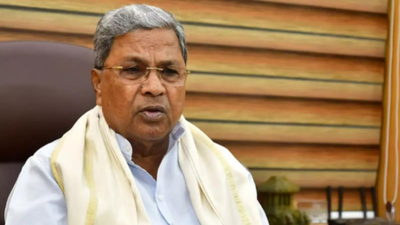Bihar polls: Steep climb for NDA in Magadh-Bhojpur; key region could make or break Nitish Kumar | India News

NEW DELHI: Dragging behind anti-incumbency and infighting within the alliance, the BJP and JD(U)-led National Democratic Alliance faces a steep climb in the politically volatile and caste-sensitive Magadh and Bhojpur regions — a contest that could decide whether Nitish Kumar retains power or cedes ground to Mahagathbandhan.In the tightly contested 2020 Bihar assembly elections, the Magadh–Bhojpur region proved to be a silver lining for the Rashtriya Janata Dal-led alliance, where it fiercely battled the JD(U) and BJP-led NDA and came out as a winner.
Why Magadh-Bhojpur matters
While the Mithilanchal and Tirhut regions delivered narrow victories for the NDA, Magadh and Bhojpur — which together send 69 MLAs to the 243-member Bihar assembly — ensured a strong opposition presence in the Vidhan Sabha.The Magadh region, comprising Arwal, Jahanabad, Aurangabad, Gaya, and Nawada districts, holds 26 seats. In 2015, when chief minister Nitish Kumar was aligned with the RJD and Congress, the NDA managed to win only six seats in the broader Shahabad belt.However, the BJP staged a strong comeback in the 2019 Lok Sabha elections, sweeping the Magadh–Shahabad range by winning Pataliputra, Aurangabad, Nawada, Gaya, Jehanabad, Ara, Sasaram, Buxar, and Karakat. The momentum didn’t last long — in the 2020 assembly polls, the tables turned in favour of the Grand Alliance, which captured most of the seats within those parliamentary constituencies.In 2020 assembly elections, the NDA secured just six of Magadh’s 26 seats — five in Gaya and one in Nawada — while the Mahagathbandhan bagged the remaining 20. In Bhojpur, which spans Patna, Nalanda, Bhojpur, Buxar, Rohtas, and Kaimur, the NDA won 13 of 43 seats, as against 30 for the Mahagathbandhan.
NDA’s plan to breach Mahagathbandhan’s fort
In the run-up to the election, the BJP is focusing on Magadh seats to ensure a better result this time. Prime Minister Narendra Modi recently visited Gaya and laid the foundation for development projects worth Rs 12,000 crore, signaling the NDA’s focus on this region.Meanwhile, Bhojpuri star Pawan Singh, who had previously rebelled and flirted with contesting independently, has patched up with the BJP. His differences with the party had threatened to split the Rajput vote, especially in the Shahabad and Bhojpur regions, where the caste balance is delicate.BJP leaders believe Singh’s presence will help consolidate upper-caste support and attract younger, entertainment-driven voters who identify with his larger-than-life persona.Additionally, the BJP has fielded several prominent leaders from this region in the upcoming elections. The party has nominated eight-time MLA Dr Prem Kumar from Gaya Sadar and four-time MLA Aruna Devi from Warisaliganj.
RJD’s plan to hold the fort
Meanwhile, the RJD and Congress have mobilised their cadres in this region ahead of the elections. Rahul Gandhi and Tejashwi Yadav’s Voter Adhikar Yatra covered a large part of this region, while Tejashwi’s Bihar Adhikar Yatra covered areas missed in the previous tour.Additionally, several NDA heavyweights from this region have jumped ship and joined the RJD ahead of the elections, altering political equations.Former JD(U) MP Jagdish Sharma’s son Rahul Sharma, JD(U) MP from Banka Girdhari Yadav’s son Chanakya Prakash, and former LJP candidate Ajay Kushwaha have joined the RJD.
1.6 lakh new voters
Interestingly, the Magadh region also witnessed the highest voter increase after the special intensive revision exercise by the Election Commission. Magadh recorded an average voter increase of 2.6 per cent, translating to 1.6 lakh new voters.The total number of electors in the final list stands at 7.42 crore, compared to 7.89 crore in the list released before the SIR on June 24 this year. According to an Election Commission release, around 65 lakh names were removed during the revision process, bringing the number of electors in the updated draft list, as of August 1, 2025, to 7.24 crore.Bihar will go to the polls in two phases — on November 6 and November 11 — with the counting of votes scheduled for November 14.





